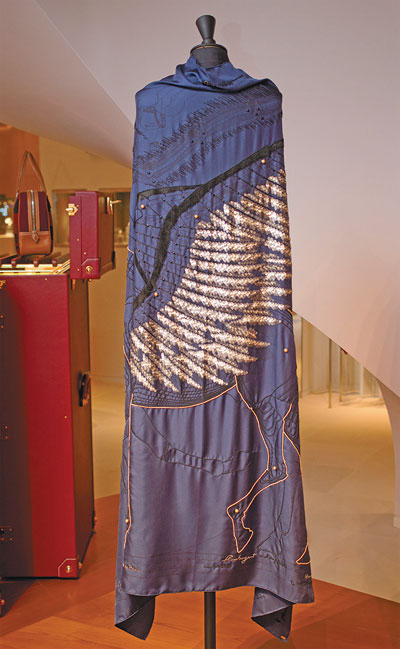Bigger, Not More Ubiquitous, is Better, Says Hermes CEO
|
The handmade silk scarf, Pegase d'Or, features a print of the mythical winged horse. |
The latest store differs from Hermes' other Maisons in Asia - one in Ginza, Tokyo and the other in Dosan Park, Seoul - in two respects: They are housed in modern buildings, while the China flagship is in a century-old red-brick structure it shares with Shang Xia, the local Chinese brand Hermes launched in 2010.
Shang Xia, which is run by a Chinese team, has not yet turned a profit. Dumas says he expects it to be more profitable than Hermes in China in the long run.
"Shang Xia needs to live itself," said Dumas. "We are not here to send the message that Shang Xia is supported by Hermes."
Hermes enjoyed sales turnover of 3.75 billion euros (29.76 billion yuan) last year distributed evenly between the US, Asia and Europe, but has seen its bottom line dip slightly this year, despite rising revenue.
"The record profitability was in 2013. We say that in 2014 it will be a little bit below this, because we did not increase the prices. This was a decision on the yuan," he says.
Reports provided by the company show that revenue climbed 17 percent in Asia, excluding Japan, in the first half of 2014 from the same period last year. The company did not provide specific figures for China.
Unlike many luxury brands and five-star hotels, Dumas said the house has not been affected by the anti-corruption campaign sweeping the country. He cited Chinese consumers' growing appreciation of elegance and higher craftsmanship, and the "very intimate" nature of Hermes products.
"A lot of people buy Hermes for themselves, and less for gifting, even in China. And that's why our growth has been maintained. On the numbers, we haven't been affected," he said.
The company's report shows that global revenue from sales of its watches dropped 7 percent in the first half, with a slump in China cited as a major factor.

















